Behind the wall: The Indians India doesn’t want Trump to see
It seems oddly fitting that a four-feet-high wall has become a talking point during US president Donald Trump’s maiden state visit to India.
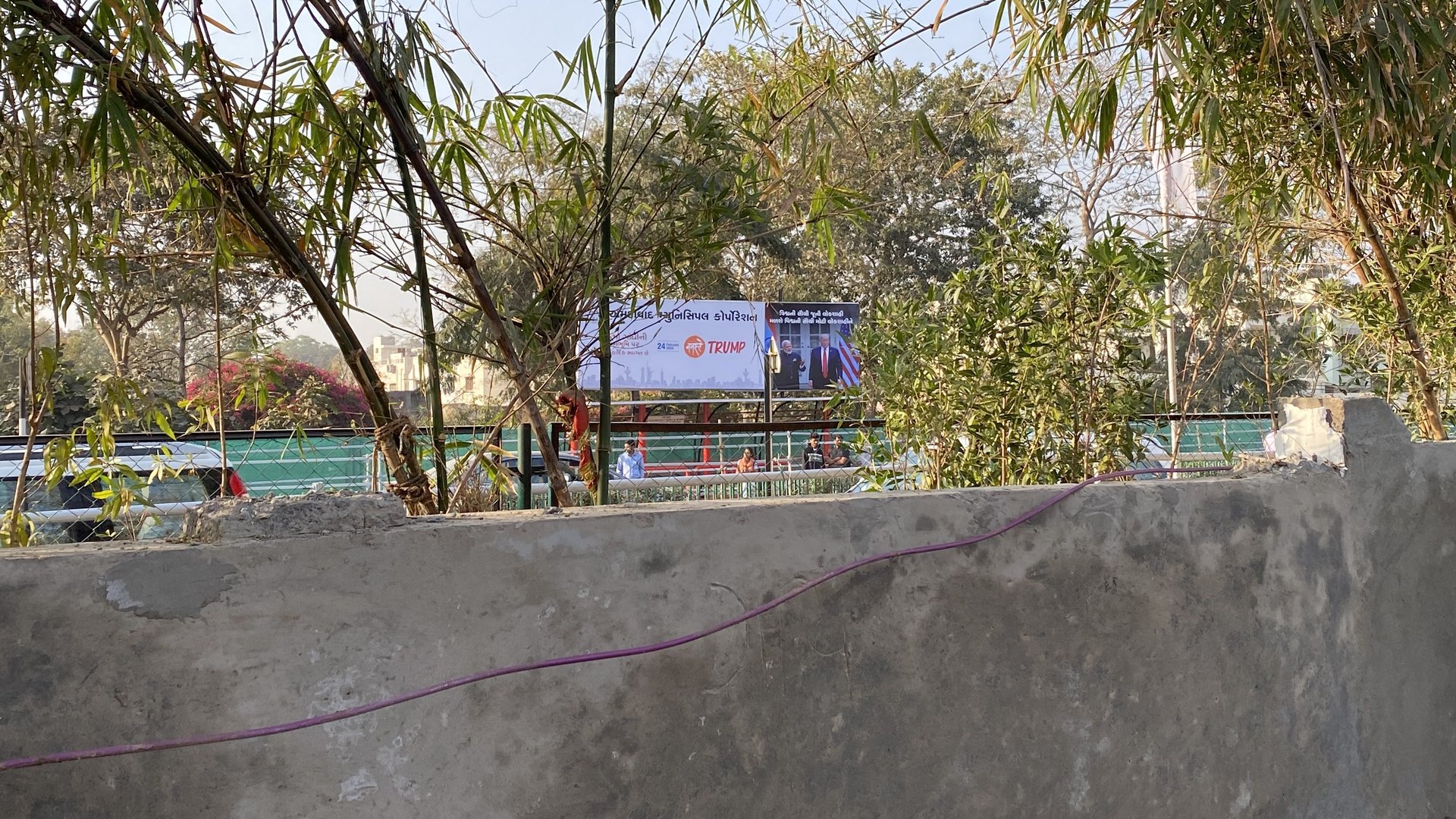

It seems oddly fitting that a four-feet-high wall has become a talking point during US president Donald Trump’s maiden state visit to India.
The brick wall, given a coating of grey cement, has been raised across a 400-metre stretch to conceal the squalor of a slum on the path that a scheduled Trump-Modi roadshow is set to take today.
Whether or not the local administration sought to give Trump’s border wall back home a hat-tip is debatable. The municipal body in the western Indian city of Ahmedabad has, in fact, even denied it has anything to do with the high-profile visit itself.
“We decided, in consultation with slum dwellers (to), build a wall to prevent encroachment and secondly to save trees which were getting damaged,” Ahmedabad municipal commissioner Vijay Nehra told The Hindu newspaper. However, the swiftness with which the wall came up almost overnight has left the nearly 5,000 residents of Saraniya Vaas of Ahmedabad’s northern outskirts displeased.
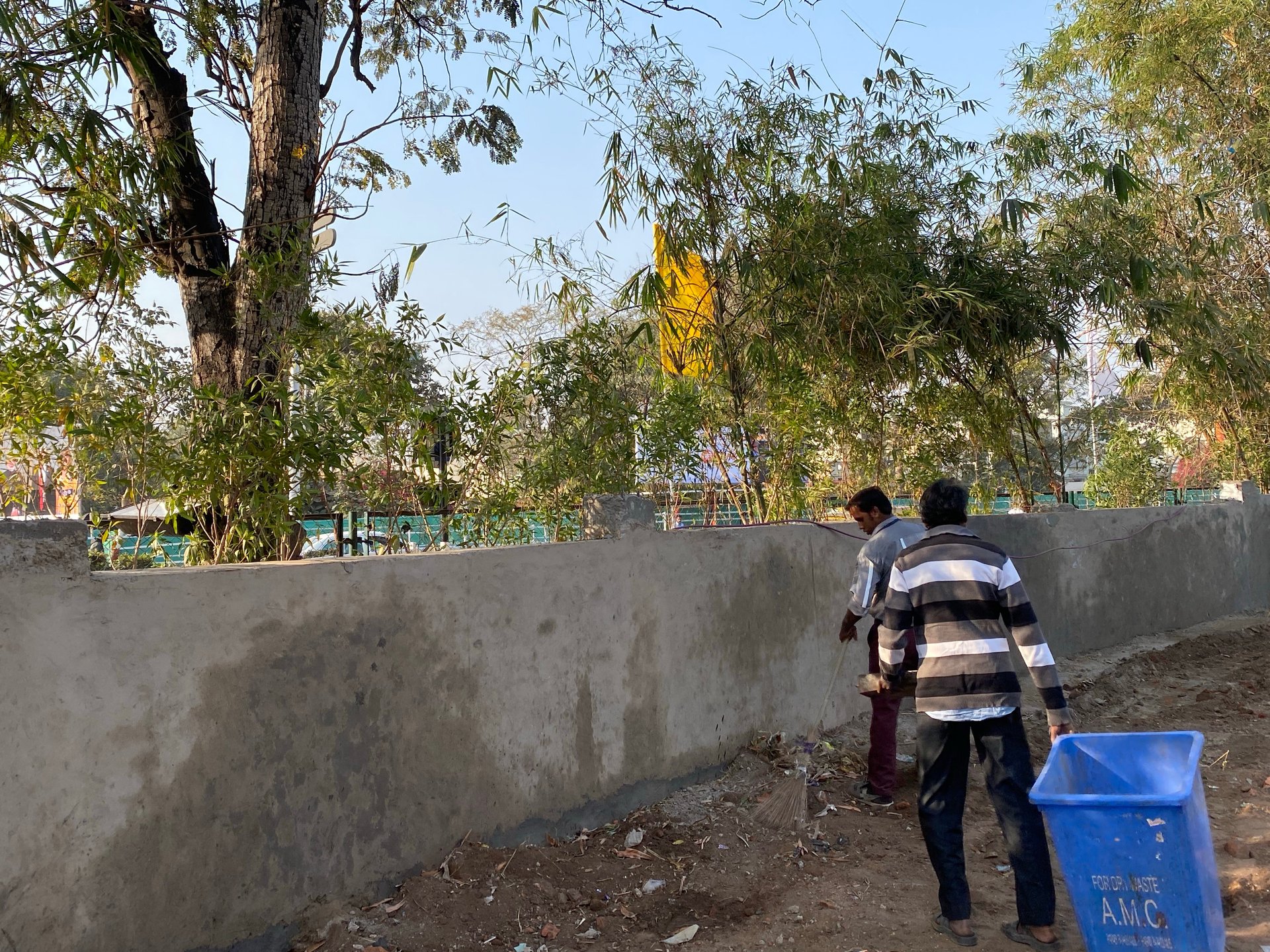
“All this government wants to do is hide us. If they can’t see us, our problems cease to exist,” says a feisty Rajal (only first name known). She spoke to Quartz while filling metals urns with water. “If I don’t get in the queue soon, the water supply will finish and we will not even have enough to cook,” she says. Others around her are vying for her spot, hoping they can get a couple of extra litres. “Women here get into nasty fights over water. Just yesterday, two women were pulling each other’s hair,” Rajal says. “But all (prime minister Narendra) Modi wants to do is forget we even exist.”
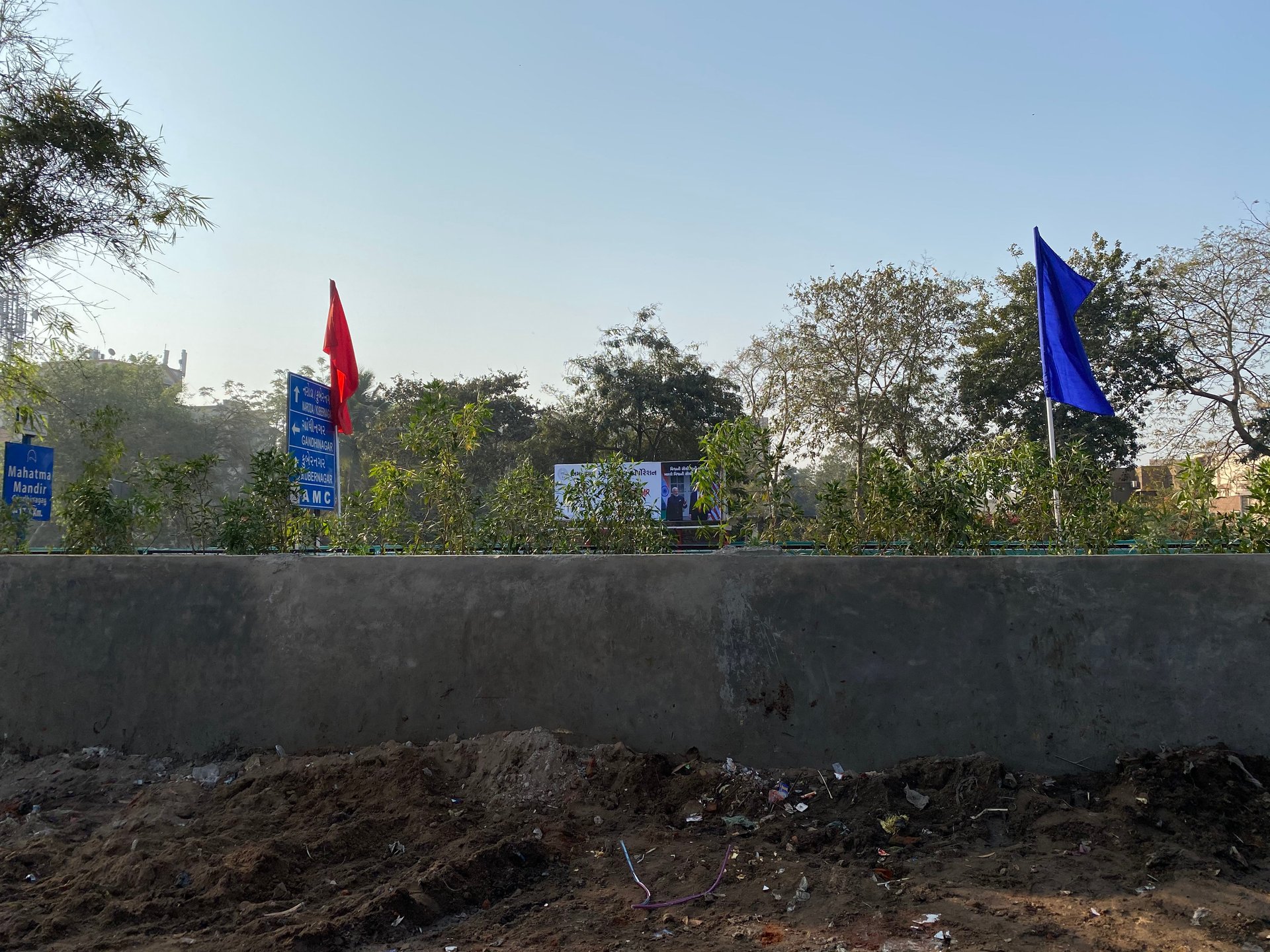
Saraniya Vaas falls along the route of the mega roadshow that the government has planned for Trump’s visit. A cavalcade with the two leaders will travel from Ahmedabad airport to the Sardar Patel Stadium in Motera today (Feb. 24). Elaborate cleanliness drives, beautification, and security measures have been put in place to ensure a glitch-free roadshow.
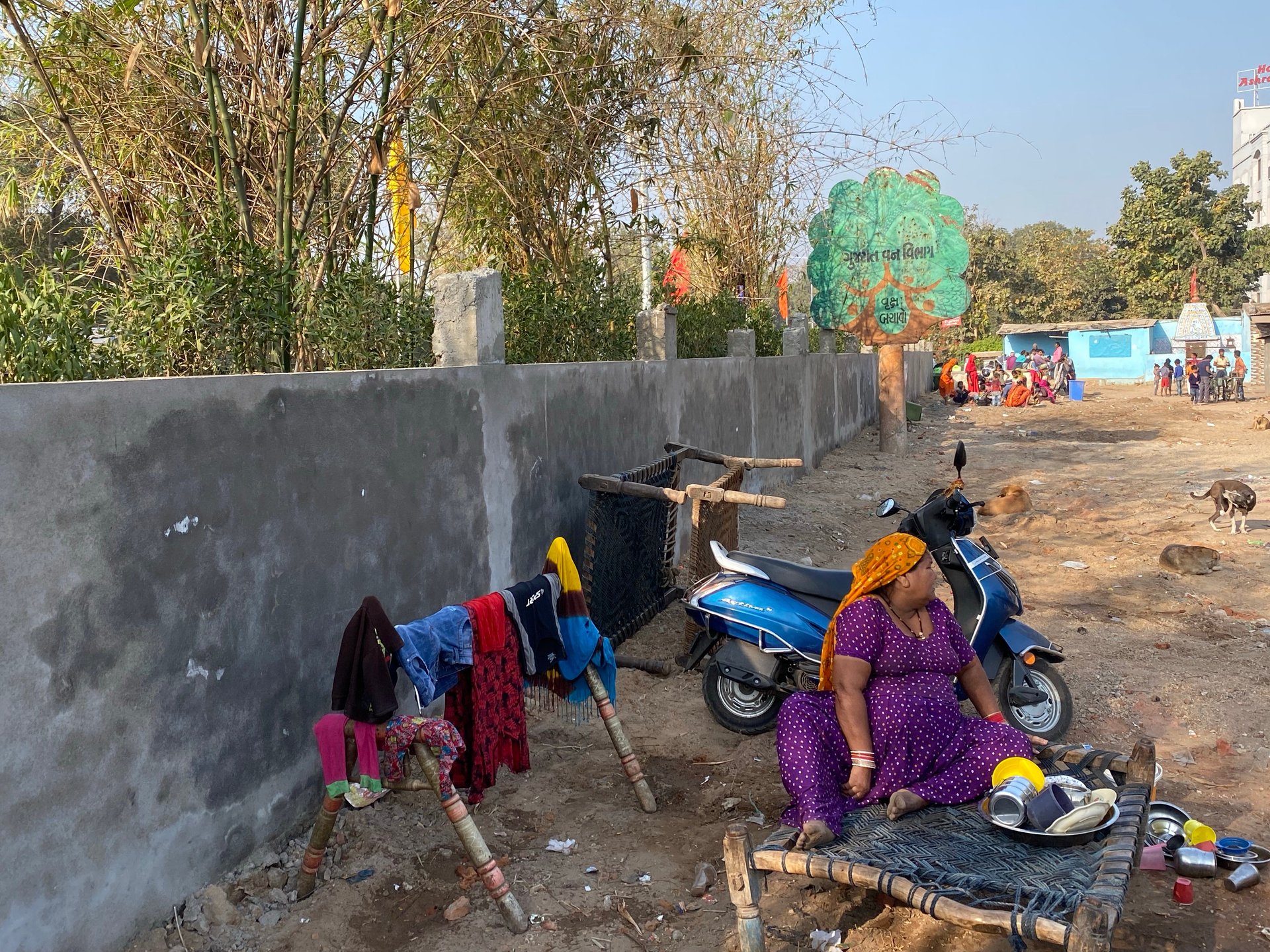
The wall is only one among these measures, but it has become a local landmark of sorts.
Hiding the humanity
Behind this new wall, now covered in concrete, is a small settlement of roughly 700 kuchcha houses. Before the wall was built last week, the residents had open access to the main street. “We realise it was not safe, and our kids would often wander off onto the street,” says Ramila Ben. “But they could’ve had a mesh boundary instead of a wall. Now, there’s going to be rainwater that will flood our homes,” she rues. The slum is on a slight downward slope, creating an unwanted catchment of rainwater.
To worsen matters, there is no proper sanitation, water pipeline, or sewage system. The lanes are basically dirt roads, uneven and muddy.
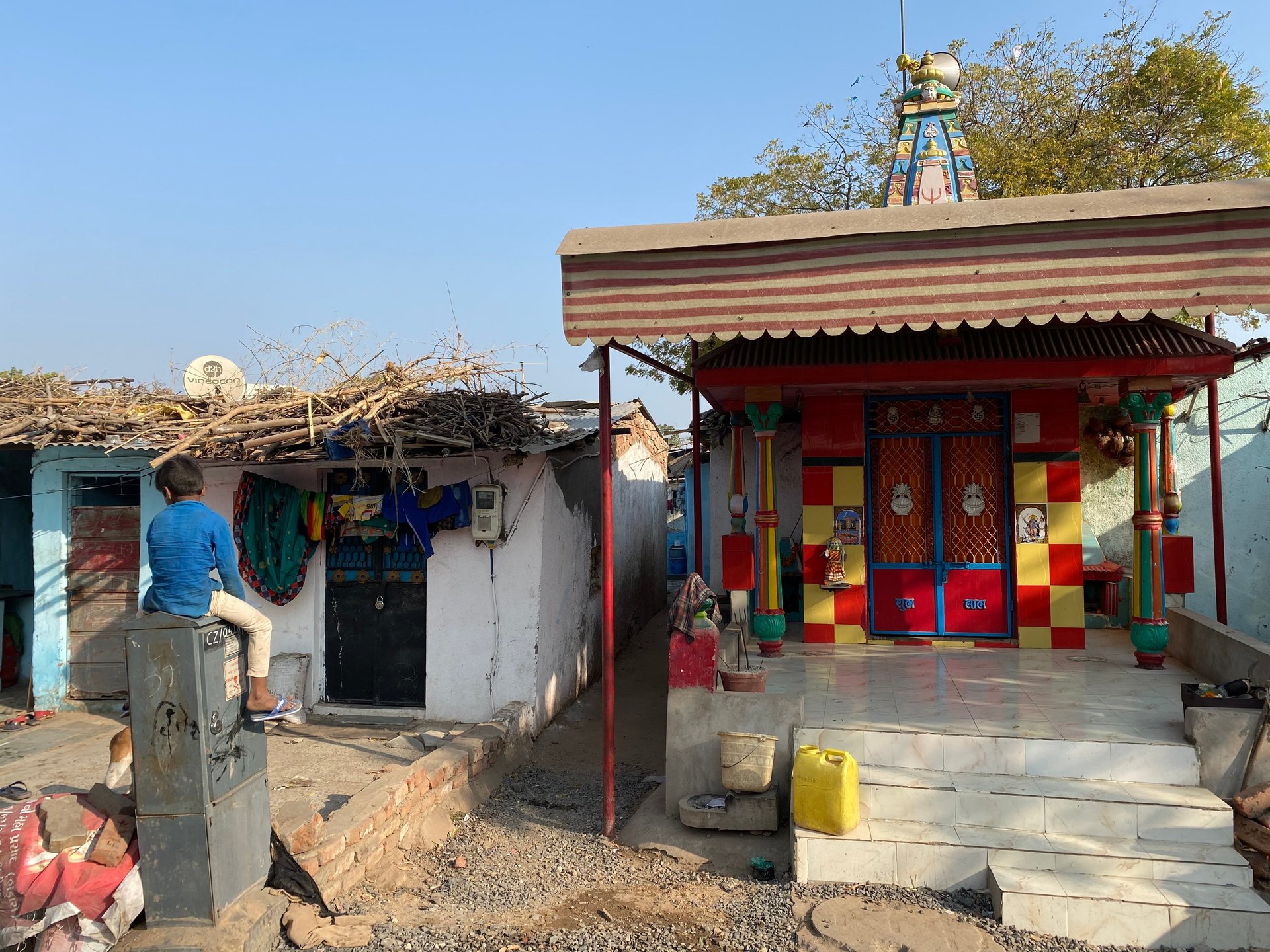
This suburban slum is occupied largely by the Saraniyas, a lower-caste community that makes and sharpens knives. “They’ve spent lakhs and crores on doing useless things like building a wall. Imagine what that money could do to make our lives better,” says Karan (only first name known), a 21-year-old who works at a local store. “We would’ve liked to see Trump. Now I don’t think I’ll even peek over the wall.”
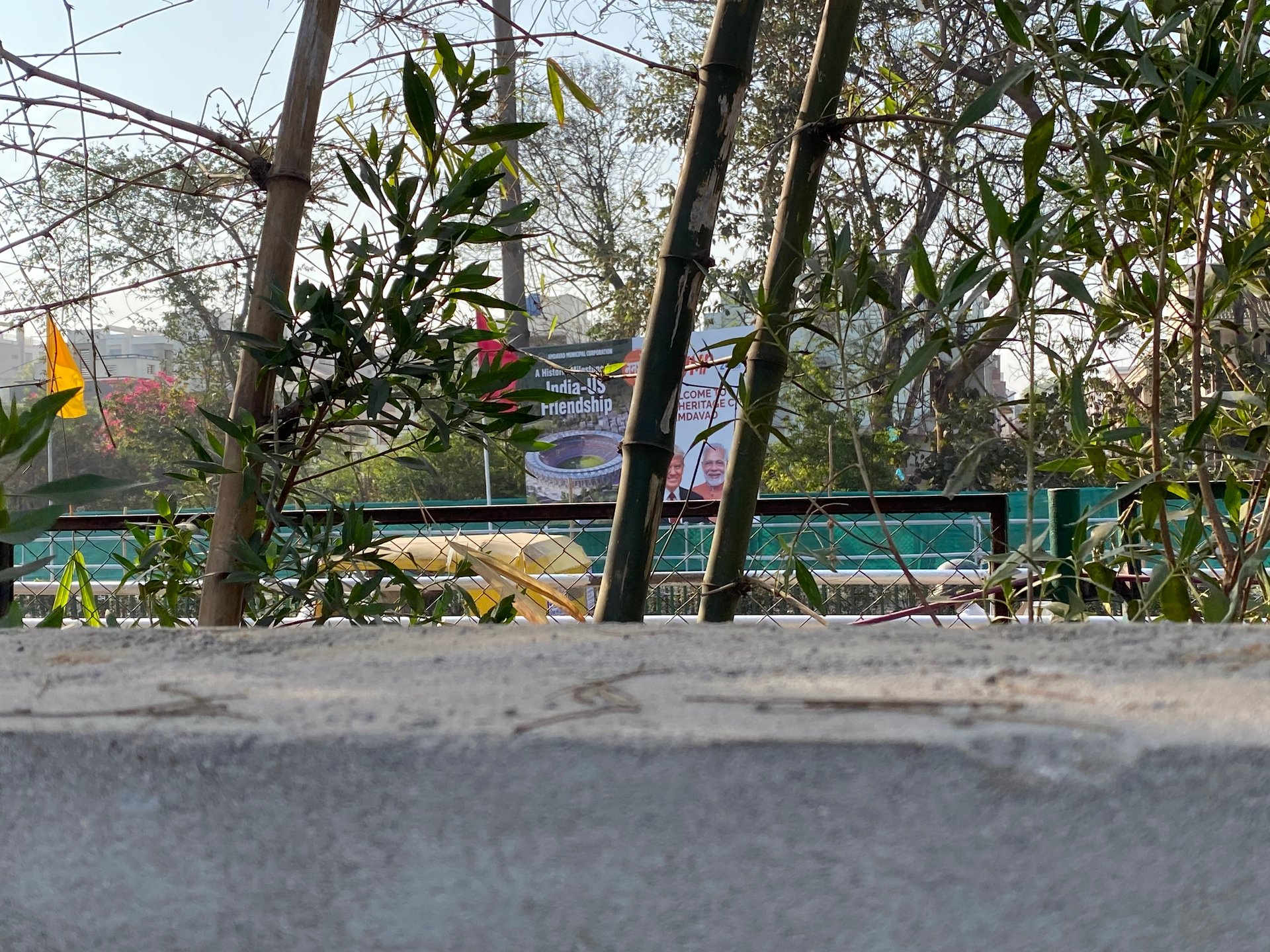
A young shopkeeper, requesting not to be identified, says he’s been asked by the police not to talk to any journalists or “outsiders.”
“The local politicians have been given money to keep us quiet. Our lives are mere politics for them,” he says.
On Feb. 19, Aswathy Jwala, a young activist from the southern Indian city of Thiruvananthapuram, visited Saraniya Vaas to protest against the wall. “But the police sent her away. We don’t matter to anyone. We’re just eyesores for these people in power,” the shopkeeper says.
Madina, a middle-aged woman, keeps her sewing aside and chimes in. “We are going back to British rule. Yeh bas angrezon ki ghulaami hai (This is just obsequiousness towards the white people).” A young Komal disagrees. “So what? I’m excited to see who he (Trump) is. Who knows, he may even improve our lives.”